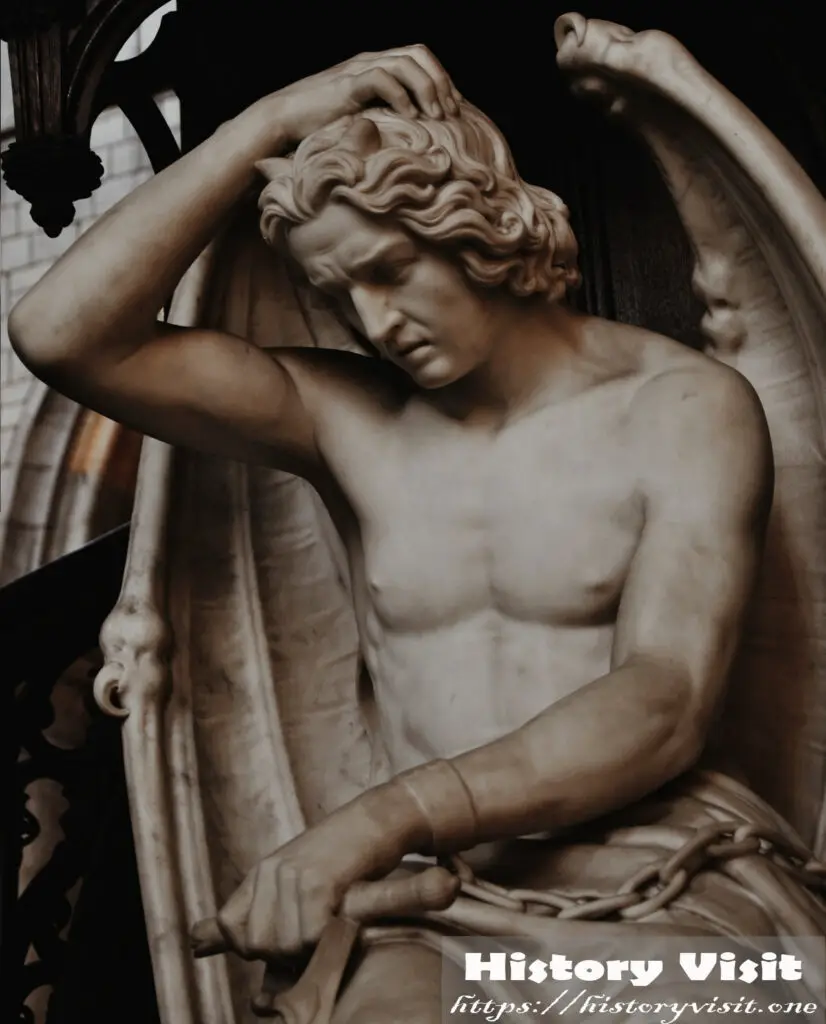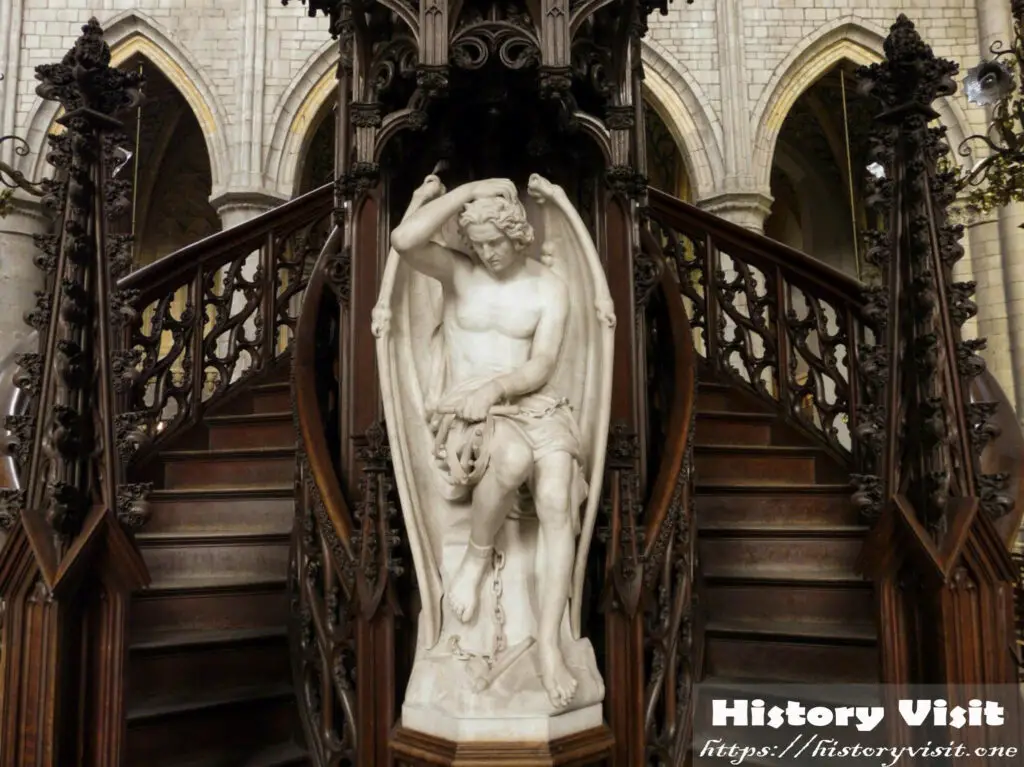“Whispers of Malevolence: Guillaume Geefs’ Masterpiece, ‘The Genius of Evil’ (1848)”

Introduction:
In the tumultuous era of the mid-19th century, the art world witnessed the emergence of a captivating and controversial masterpiece—Guillaume Geefs’ “The Genius of Evil” (1848). This sculptural marvel delves into the depths of human nature, transcending its time and leaving an indelible mark on the world of art. To truly appreciate this masterpiece, it is essential to explore the historical backdrop that inspired its creation and unravel the hidden stories woven into its sculpted form.
Historical Background and Hidden Stories:
The mid-19th century was marked by political upheaval, social change, and philosophical introspection. Against this backdrop, artists sought to capture the essence of the human condition, often turning to mythology and allegory for inspiration. In the case of “The Genius of Evil,” Geefs drew from the rich tapestry of myth and morality, crafting a sculpture that would not only challenge the viewer but also provoke contemplation on the duality inherent in human nature.
Guillaume Geefs: A Glimpse into the Artist’s Life and Early Works:
Before delving into the intricacies of “The Genius of Evil,” it is imperative to understand the artist behind this masterpiece—Guillaume Geefs. Born in Antwerp in 1805, Geefs exhibited a prodigious talent for sculpture from an early age. Trained at the Royal Academy of Fine Arts in Antwerp, he quickly gained recognition for his skillful manipulation of marble and his ability to breathe life into stone.
Geefs’ early works, including his acclaimed sculptures “The Illusion” and “The Awakening of the Arts,” showcased his penchant for capturing nuanced emotions and his dedication to classical aesthetics. His commitment to mastering his craft earned him admiration within artistic circles, paving the way for the creation of “The Genius of Evil.”
The Genius of Evil: A Masterpiece Unveiled:

Crafted in 1848, “The Genius of Evil” stands as a testament to Geefs’ artistic prowess. The sculpture portrays a malevolent figure, contorted in a dance of maleficent ecstasy. The details are striking—every sinew, every fold of fabric, and the play of light on the marble surface contributes to the overall sense of dark beauty.
Geefs’ use of symbolism is masterful; the Genius, embodying evil, is not presented as a monstrous caricature but as a figure with undeniable allure. The artist compels the viewer to confront the seductive nature of malevolence, challenging preconceived notions of good and evil. The choice of marble as the medium adds a timeless quality to the sculpture, enhancing its impact and ensuring its relevance across generations.
Artistic Details and Mastery:

Geefs’ attention to detail in “The Genius of Evil” is nothing short of extraordinary. The contorted pose of the figure, the intricate rendering of facial expressions, and the flowing drapery all contribute to the overall dynamism of the sculpture. The contrast between light and shadow enhances the dramatic effect, casting the Genius in an ethereal glow that captivates the viewer.
Moreover, Geefs’ technical mastery is evident in the fluidity of the marble, seemingly defying the medium’s inherent rigidity. The artist’s ability to convey movement and emotion through stone elevates “The Genius of Evil” to the realm of timeless masterpieces.
Impact on the World of Art:
Upon its unveiling, “The Genius of Evil” sparked fervent discussions within artistic and intellectual circles. Geefs’ exploration of morality and the human psyche challenged conventional artistic norms, paving the way for a new era of introspective and thought-provoking sculpture. The masterpiece not only solidified Geefs’ reputation as a visionary artist but also contributed to the broader conversation on the role of art in society.
The sculpture’s influence extended beyond the confines of the art world, permeating literature, philosophy, and even political discourse. “The Genius of Evil” became a symbol of the complexities inherent in the human experience, prompting viewers to confront the darker aspects of their own nature.
Conclusion:

In conclusion, Guillaume Geefs’ “The Genius of Evil” is a tour de force that transcends its time, challenging viewers to confront the intricacies of morality and the duality within the human soul. Geefs’ early life, marked by a dedication to artistic excellence, laid the foundation for this masterpiece. Through meticulous craftsmanship and a profound understanding of symbolism, Geefs created a sculpture that continues to captivate and provoke thought.
As “The Genius of Evil” continues to stand as a testament to the power of art, its impact on the world of sculpture and the broader artistic landscape remains undeniable. In the years that followed its creation, the masterpiece has left an indelible mark on the trajectory of art history, influencing subsequent generations of artists and fostering a deeper appreciation for the nuanced exploration of human nature through the medium of sculpture. Guillaume Geefs’ legacy endures, embodied in the enduring allure of “The Genius of Evil.”


